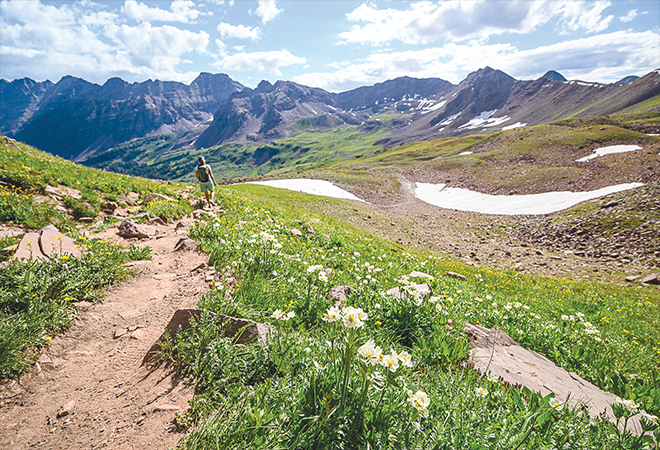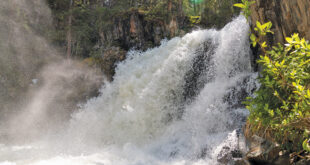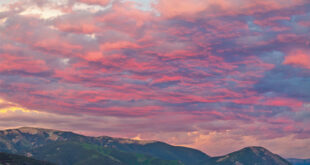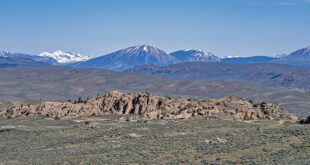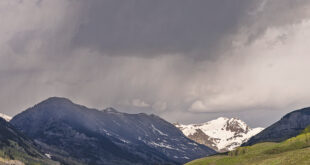Seeing the thermometer hit 80 degrees this week in Crested Butte is not normal. Heck, not that long ago it was never normal to hit 80 in the height of summer, let alone in September. Things aren’t always normal.
It used to be normal for the ski bum types to roll into Crested Butte and find an old mining shack with little insulation on Sopris or Maroon to share with a couple (dozen) buddies for the winter season. Rent was cheap (my first year I paid less than $80 a month) and fun was plentiful. You knew it was a really cold night if the dog’s water bowl was totally frozen when you woke up and ice wasn’t just covering the top. There aren’t many of those places left anymore and while that might be the “new normal,” it’s not a good normal for a ski town.
The ski bum lifestyle is one of the foundations of a real ski town. Working hard and playing harder is part of the culture. With the old mining shacks being snapped up and renovated for high-end living for new residents, second homeowners or short-term rented for visitors, the ski bum living options are declining. Thus the need for more “workforce housing.”
There’s an old Denver Post article from September 1972 being floated around where the mayor at the time, Bill Crank, lamented the lack of “low cost housing in a tourist town” and wondered if there was any federal money available to address the problem. The article states that according to Crank, “people who work in the ski area—waitresses, bartenders, and instructors—don’t make enough money to afford housing in town. Land costs are high and so are construction costs.”
Reading that today, maybe it’s clear that that is an unfortunate “normal” of towns like ours. But there were always the ski bum communal housing options that aren’t around much, if at all, anymore. And if the proposed 156-unit rental project south of town doesn’t want to address the super-temporary, seasonal “ski bum” worker—who will? A ski town without ski bums doesn’t seem normal—and I’m at a loss on how to fix that. I know it’s always better to have working people living in town if at all possible.
One suggestion I recently heard was that we should just accept what we have and be happy with enough workers to keep most places open most days but not everything open seven days a week. The ebb and flow of economics (upcoming recession anyone?) will flatten out the supply and demand curve. I’m not sure that normal works in the long run.
Yellow leaves popping out by early September used to be normal. And while the sharp-eyed hikers and bikers can find some aspens turning gold right now, it isn’t exactly overwhelming. Summer is lingering and a lot of green still covers the hills. The new normal seems to be a later start with the yellow show and a later end stretching into October. I kind of like that shift in autumn splendor as it slows down enough for locals to have a chance to really get out there and enjoy it after the tourist wave slows.
And while normal used to be that the wave would crash about the middle of August, the waves still roll in here now through the weekends of September. The waves look different for sure as families with school kids are replaced by older couples taking fall road trips, but it is now normal to have busy restaurants in September and that wasn’t always the case.
It used to be normal for there always to be a fight going on somewhere in the valley. Ranchers might be pissed at bikers who left gates open. Business owners might be mad at the locals making fun of “Jerrys” and “tourons.” Realtors might not like it when hippies would smoke weed on Elk Avenue. That hasn’t changed too much actually, except that with weed being legal in Colorado the smell of ganja is usually wafting around everywhere and tourists and potential home buyers seem to accept it.
Ranchers are still not in love with the impacts left by recreationists, as evidenced by the ongoing missing bridge debacle happening out Brush Creek on Strand Hill. That situation remains in flux, with a local rancher having absconded with a bridge that spanned his water and that he felt threatened his livelihood. So bikers and hikers now here to cross the canal on Strand like they have for decades—by getting their tires and feet wet.
Oh, and of course, there’s still friction between the north and south ends of the valley, but people would prefer to gloss over the deeper issues and simply have dinner together once a month in a show of solidarity. Fighting is not abnormal for this place. Fighting a mine, fighting the ski area, transmountain water diversions, fighting the feds, fighting one another over beer promotions is part of the “charm,” but so is eventually coming together in a hard-fought compromise over whatever the issue of the day is. We’ve done really well with that attitude and it is not unusual for us to fight hard and then share a beer together with whomever we are fighting. That’s a normal we can appreciate.
What is normal anymore? The president who cares not a whit about those who differ from him on his views and thus sows huge division between partisan sides? The Dems who in an effort to defeat each other more than Donald are moving so far to the socialist left that they seem to purposely want to alienate those voters in the middle who have the power to swing the election in 2020? Deli running for mayor—okay, that’s normal—he’s served literally decades on Crested Butte’s Town Council and this would be his fifth term in the center seat.
Normal isn’t 80 degrees in Crested Butte in September and according to the phone weather in my pocket that will change soon and we’ll see highs in the upper 60s instead. Whew. Now, I will say a lot of us wouldn’t mind seeing the snow we had last year in the coming ski season. That’s a new normal I could get used to. But we’ll have to wait and see on that one.
—Mark Reaman
 The Crested Butte News Serving the Gunnison Valley since 1999
The Crested Butte News Serving the Gunnison Valley since 1999

